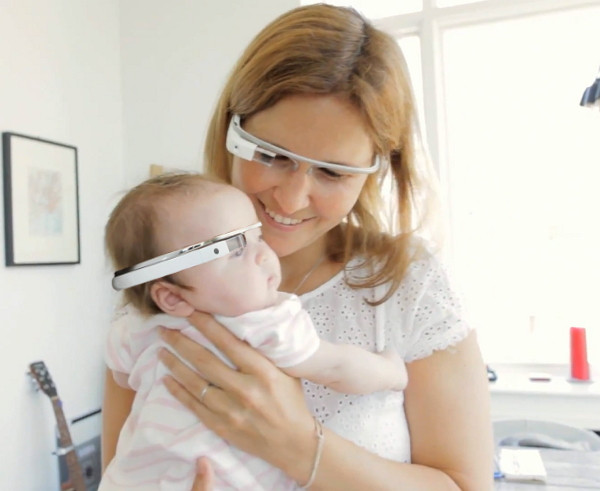Growing Up with Google Glass
Babies and kids love smartphones and tablets: they’re brightly colored, noisy, respond to touch and belong to adults. Kids will probably love Google Glass, too.

Everything Google has said and shown about their wearable computer involves adults and mostly rather serious pursuits such as getting directions, and doing Google searches. But when the device becomes available to buy later this year, children of all ages will begin using them, too.
A whole category of kid-centric Glass apps will likely emerge. The way that Glass responds to voice and head motions could be used to create some interesting games and educational apps, for example. Apps that help parents check up on their Glass-wearing kids, for example by streaming video from their point of view, will also surely appear.
Google’s press shots of Glass rarely show more than one person wearing them at a time. But just as contemporary families can be seen together but each stroking a personal touch screen device, if Glass becomes popular family units will spend time together while each wearing a computer and display on their face.
Most people at some point or another will have experienced a moment in which they realize the generation behind them has a very different relationship to technology - and hence to the world - than they do. Glass, which mediates a person’s relationship with the world more directly than other technologies, will likely produce its own share of such moments.
Keep Reading
Most Popular
Large language models can do jaw-dropping things. But nobody knows exactly why.
And that's a problem. Figuring it out is one of the biggest scientific puzzles of our time and a crucial step towards controlling more powerful future models.
How scientists traced a mysterious covid case back to six toilets
When wastewater surveillance turns into a hunt for a single infected individual, the ethics get tricky.
The problem with plug-in hybrids? Their drivers.
Plug-in hybrids are often sold as a transition to EVs, but new data from Europe shows we’re still underestimating the emissions they produce.
Stay connected
Get the latest updates from
MIT Technology Review
Discover special offers, top stories, upcoming events, and more.